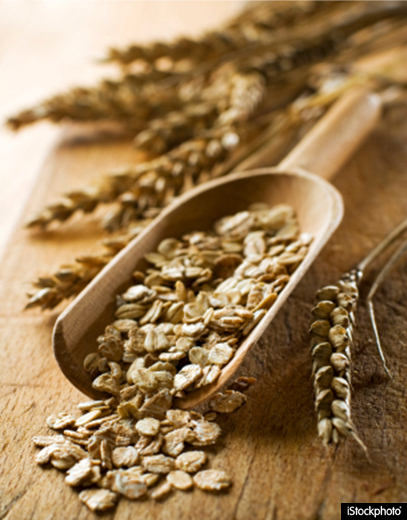
By Charlie Seltzer, M.D.
Because the health benefits of fiber are so widespread, it's one of the most talked about nutrients.
Dietary fiber is comprised of carbohydrates that cannot be digested by humans, as well as lignin, which is a compound that forms the cell wall of plant cells.
Until very recently, fiber was divided into two broad categories: soluble and insoluble, the classification being based on whether or not it dissolves in water. Solubility, or the ability to disperse in water, was originally thought to predict fibers' physiologic effects. Research reveals this is not always the case. However, the terms soluble and insoluble fiber are still used for labeling purposes by the FDA, and are the terms most widely used by nutritionists and dietitians.
Researchers are now using other classification systems as well, distinguishing between fibers that exist in whole foods (dietary fiber) and fibers that are extracted or manufactured (functional fiber).
Dietary fiber includes materials derived from plants as well as animals (i.e. chitin, which forms the shells of insects and crustaceans, though people don't generally eat lobster shells). Functional fiber can be either man-made (i.e., fructooligosaccharides and polydextrose, which are used as food additives) or extracted from natural sources, like the chitin from crustaceans, which is found in nutritional supplements.
Although the different ways fiber is classified is interesting, from a health standpoint, it doesn't really matter, as the health benefits of a high-fiber diet are independent of the way a scientist groups them.
Benefit #1: Cholesterol Lowering Effects
Viscous fiber combines with water to form a gel in the stomach. Multiple clinical trials have demonstrated that intake of viscous fiber lowers both total and LDL (traditionally thought of as the "bad" cholesterol). The foods used in these studies include beans, peas and lentils.
Benefit #2: Heart Disease Reduction
High intakes of fiber-rich foods strongly correlate with lower incidence of both number of heart attacks and deaths from heart disease.
Benefit #3: Blood Sugar Control
Since viscous fiber forms a gel in the stomach when added to meals, the result is a slowing of nutrient absorption into the blood stream; this effectively lowers the amount of insulin needed to clear the sugar from the bloodstream and has favorable effects on blood sugar and insulin resistance. This is especially important for diabetics but can also eliminate the post-meal hunger that can result from a dip in blood sugar after consumption of a large amount of carbohydrates.
Benefit #4: Treating and Preventing Constipation
As fiber is not absorbed through the GI tract, fiber-rich foods add to stool bulk and decrease the amount of time needed for waste to pass through the digestive system. Most of the research supporting this benefit has been done using fruit, vegetables and wheat bran.
Benefit #5: Weight Control
Viscous fiber's ability to increase feelings of fullness likely results from the gel it forms in the stomach, making it easier to eat fewer calories. Additionally, fiber has fewer calories than other carbohydrates. Studies show that people who consume fiber-rich foods are more likely to maintain a healthy weight than those who don't. However, the role of fiber alone as a weight management tool has not been clearly established.
More From BuiltLean:
Top 5 Obstacle Course Races: Which Is Best?
How To Deadlift With Proper Form & Technique
8-Week Fitness Program To Burn Body Fat
For more articles and videos, visit BuiltLean, or join the conversation at our Facebook page.